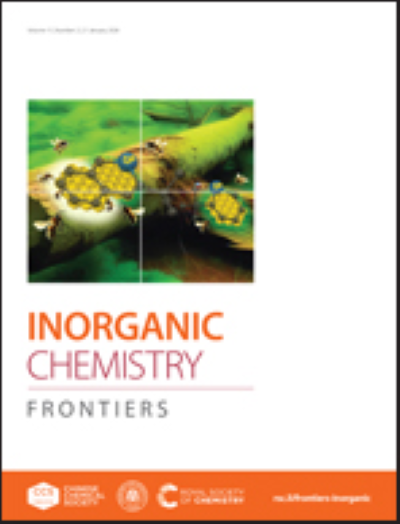基于d轨道重叠的富缺陷高熵合金AuCuAgRuNi纳米纤维生物质增值转化
IF 6.1
1区 化学
Q1 CHEMISTRY, INORGANIC & NUCLEAR
引用次数: 0
摘要
开发具有高活性和选择性的电催化剂来促进5-羟甲基糠醛(HMF)的氧化具有重要意义,但也是生物质升级领域的挑战。本文采用简易的一锅湿法合成了富缺陷高熵合金AuCuAgRuNi纳米纤维(AuCuAgRuNi NFs)。值得注意的是,AuCuAgRuNi NFs在环境条件下对hmf - fdca的转化表现出优异的电催化性能,产率达到97.15%,选择性达到98.40%,稳定性良好。理论计算表明,缺陷诱导的电子调制优化了反应物的吸附,而多金属组分之间的d轨道杂化促进了电子的再分配,协同提高了催化活性。此外,HMF氧化已成功地与流动电解池中的析氢相结合,并建立了一个节能的耦合系统,有望实现可扩展的生物质增值。本研究为高熵合金体系的创新合成和内在催化机制提供了有价值的见解。本文章由计算机程序翻译,如有差异,请以英文原文为准。

Defect-rich high-entropy alloy AuCuAgRuNi nanofibers based on d-orbital overlap for biomass value-added conversion
Developing electrocatalysts with high activity and selectivity to promote the oxidation of 5-hydroxymethylfurfural (HMF) holds substantial importance yet presents challenges in the realm of biomass upgrading. Herein, the defect-rich high-entropy alloy AuCuAgRuNi nanofibers (AuCuAgRuNi NFs) were synthesized via a facile one-pot wet chemical synthesis. Remarkably, the AuCuAgRuNi NFs demonstrate exceptional electrocatalytic performance for HMF-to-FDCA conversion under ambient conditions, achieving 97.15% yield and 98.40% selectivity with outstanding stability. Theoretical calculations reveal that defect-induced electronic modulation optimizes reactant adsorption, while d-orbital hybridization among multi-metallic components facilitates electron redistribution, synergistically enhancing catalytic activity. Furthermore, HMF oxidation has been successfully integrated with hydrogen evolution in a flow electrolysis cell, and an energy-efficient coupled system has been established, which holds promise for scalable biomass valorization. This research provides valuable insights into the innovative synthesis and inherent catalytic mechanisms of high-entropy alloy systems.
求助全文
通过发布文献求助,成功后即可免费获取论文全文。
去求助
来源期刊

Inorganic Chemistry Frontiers
CHEMISTRY, INORGANIC & NUCLEAR-
CiteScore
10.40
自引率
7.10%
发文量
587
审稿时长
1.2 months
期刊介绍:
The international, high quality journal for interdisciplinary research between inorganic chemistry and related subjects
 求助内容:
求助内容: 应助结果提醒方式:
应助结果提醒方式:


